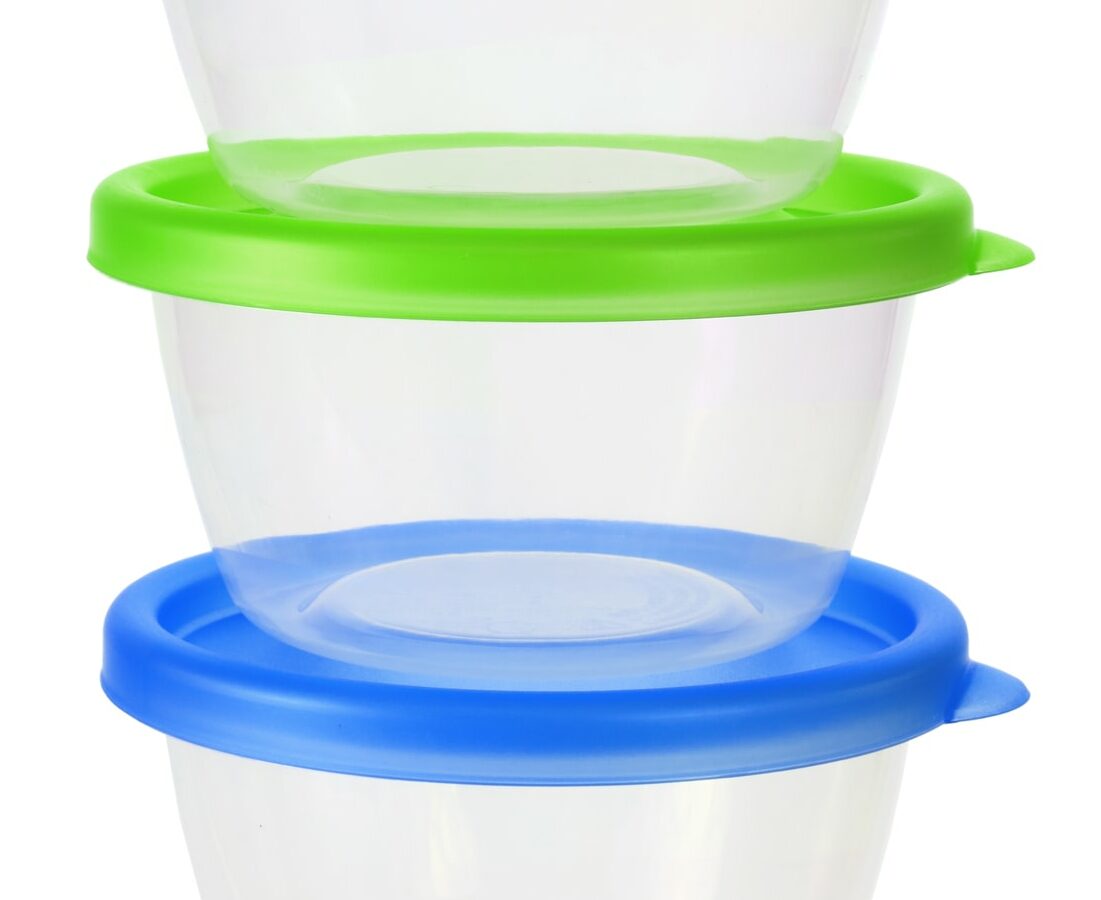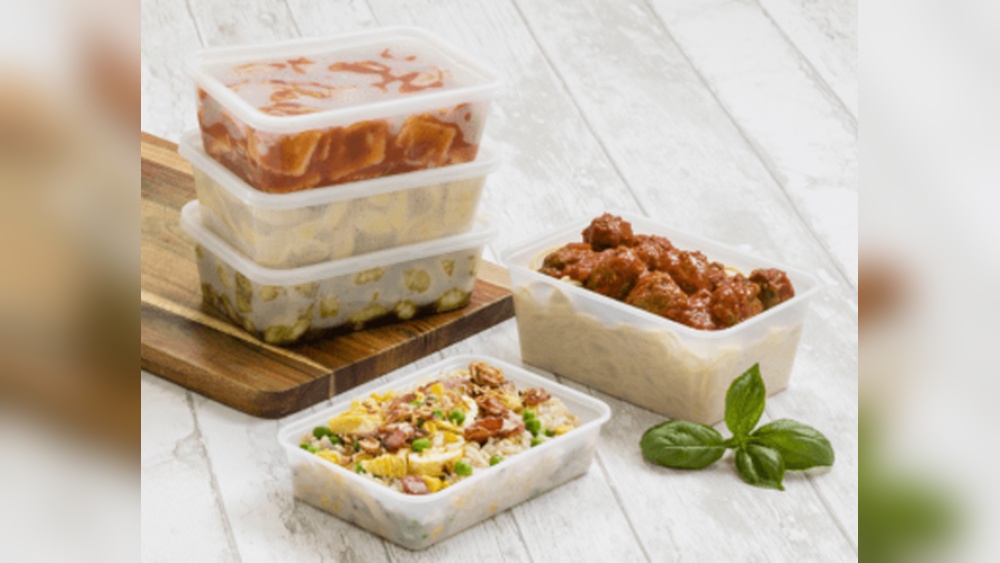Are you wondering if you can freeze your leftovers or meal preps in plastic containers? It’s a common question, especially when you want to save time and avoid food waste.
The good news is—you can freeze food in plastic containers, but not all plastics are created equal. Using the wrong container might cause cracks, leaks, or even affect the taste of your food. You’ll discover which plastic containers are safe for freezing, what to avoid, and smart tips to keep your frozen meals fresh and tasty.
Ready to become a freezer pro and keep your food perfectly preserved? Keep reading!

Credit: happymoneysaver.com
Freezing Food In Plastic
Freezing food in plastic containers is a common practice in many homes. It helps keep food fresh for longer periods. Choosing the right plastic container is important for food safety and quality.
Not all plastic containers are suitable for freezing. Using the wrong type can cause cracking or food spoilage. Proper containers protect food from freezer burn and maintain taste.
Choosing Freezer-safe Plastic Containers
Look for containers labeled “freezer-safe” on the packaging. These containers are made to resist cold temperatures without breaking. High-density polyethylene (HDPE) and polypropylene (PP) are common safe plastics.
Thin or flimsy plastics can crack or leak when frozen. Avoid containers that show signs of wear or damage. A good seal is essential to keep air out and preserve food quality.
Preparing Food For Freezing In Plastic
Cool cooked food to room temperature before freezing. Hot food can cause condensation and weaken the container. Leave space at the top of the container for food to expand as it freezes.
Seal containers tightly to prevent air from entering. Label containers with the date and contents for easy identification. Proper preparation helps keep food fresh and safe to eat.
Benefits Of Using Plastic Containers For Freezing
Plastic containers are lightweight and easy to stack in the freezer. They protect food from moisture and freezer burn. Many plastic containers are reusable and easy to clean.
Rigid containers with straight sides make it simple to remove frozen food. They come in various sizes to fit different types of food. Plastic containers offer convenience and good storage options.

Credit: www.healthyfood.com
Choosing Freezer-safe Containers
Freezing food in plastic containers keeps meals fresh longer. Choosing the right container matters for safety and quality. Not all plastic containers can handle freezing temperatures well. Some plastics crack or let air in, which harms the food. Using freezer-safe containers protects your food from freezer burn and spills. It also helps keep your freezer organized and your food easy to find.
Look for containers designed to stay strong and sealed in the freezer. These containers keep moisture and odors out. They also stop the plastic from breaking or warping. Understanding plastic types, labels, and container shapes helps you choose the best option for freezing food.
Types Of Safe Plastics
Certain plastics work best for freezing food. High-density polyethylene (HDPE) and polypropylene (PP) are safe choices. These plastics resist cracking in cold temperatures. Low-density polyethylene (LDPE) and polyethylene terephthalate (PET) also freeze well. Avoid thin or flimsy plastics that may break or leak. Using thick, durable plastic keeps your food secure and fresh.
Labels And Symbols
Check containers for freezer-safe labels or symbols. Look for a snowflake icon or words like “freezer safe.” These marks show the container can handle cold without damage. The recycling number on the bottom also helps. Numbers 2, 4, and 5 usually mean the plastic is safe for freezing. Containers without these labels might not protect your food well in the freezer.
Rigid Vs Flexible Containers
Rigid containers hold their shape and protect food well. They are easier to stack in the freezer. Straight sides help remove frozen food without breaking it. Flexible containers, like freezer bags, save space and fit odd shapes. They are good for liquids or small portions. Choose rigid containers for solid foods and flexible ones for liquids or soft items.
Best Containers For Freezing
Choosing the right container is key for freezing food safely and effectively. The container should protect food from freezer burn and keep it fresh. It must also prevent leaks and be easy to handle.
Containers that seal tightly help maintain food quality. They also save space by stacking neatly in the freezer. Not all plastics work well in freezing conditions. Look for options designed to withstand low temperatures.
Rigid Plastic Containers
Rigid plastic containers hold their shape well when frozen. They do not bend or break easily under cold pressure. These containers usually have tight-fitting lids that seal out air. Straight sides make it easy to remove frozen food without damage.
Most rigid containers are reusable and dishwasher safe. They come in many sizes to fit different types of food. Look for containers marked as freezer-safe to avoid cracking or warping.
Moisture-vapor-resistant Plastics
Plastics that resist moisture and vapor help prevent freezer burn. High-density polyethylene (HDPE) and polypropylene (PP) are common examples. These plastics block moisture better than thin or flimsy containers.
They provide a strong barrier against air and ice crystals. This helps frozen food stay fresh longer. Containers made from these plastics often have a freezer-safe label.
Food-grade Silicone Options
Food-grade silicone containers are flexible and durable for freezing. They can expand with the food as it freezes. Silicone is also safe for use in the freezer, microwave, and dishwasher.
These containers seal tightly to lock in freshness. Their softness makes it easy to pop out frozen food. Silicone options are perfect for odd-shaped or delicate items.
Containers To Avoid
Freezing food in plastic containers is common, but not all containers work well. Some plastics can crack, leak, or affect food quality. Choosing the wrong container can cause freezer burn or contamination. Avoid these types of plastic containers to keep your food safe and fresh.
Single-use Plastics
Single-use plastics are not made for freezing. They can become brittle and crack in low temperatures. These containers often lack a tight seal, allowing air inside. Air causes freezer burn and dries out food. Avoid using plastic wrap, sandwich bags, or disposable trays for freezing.
Thin And Flimsy Plastics
Thin plastics do not hold up well in the freezer. They may tear or puncture easily. Food juices can leak and cause messes. These containers do not protect food from odors or moisture. Use thick, sturdy containers instead for better food preservation.
Damaged Or Cracked Containers
Containers with cracks or damage are unsafe for freezing. Cracks let air and moisture into the food. This speeds up spoilage and freezer burn. Even small cracks can worsen when frozen. Always check containers for damage before freezing any food.
Takeout Containers
Takeout containers are usually not freezer-safe. They are designed for short-term use and room temperature. Many takeout plastics can warp or crack in the freezer. Also, some may release harmful chemicals when frozen. Avoid freezing food in these containers to protect your health.
Freezing Tips For Plastic Containers
Freezing food in plastic containers is a convenient way to store meals and leftovers. Using the right techniques helps keep food fresh and prevents damage to containers. Follow these simple tips to freeze food safely and effectively in plastic containers.
Leave Space For Expansion
Food and liquids expand when they freeze. Always leave extra space at the top of the container. This prevents the container from cracking or bursting. About one inch of space is usually enough. It helps the container hold the food safely as it freezes.
Cool Food Before Freezing
Hot food can cause plastic containers to warp or release harmful chemicals. Let food cool to room temperature before placing it in the freezer. Cooling first also stops ice crystals from forming inside the food. This keeps the texture and flavor better after thawing.
Proper Sealing Techniques
Make sure containers are sealed tightly to avoid freezer burn. Use lids that fit well and snap on firmly. For extra protection, cover the container with plastic wrap before sealing. This keeps air out and preserves the food’s freshness longer.
Stacking And Storage Advice
Stack containers neatly to save freezer space. Place heavier containers at the bottom to avoid crushing lighter ones. Label each container with the date and contents. This helps you find food quickly and prevents keeping items past their safe use time.

Credit: blog.themodernmilkman.co.uk
Special Considerations
Freezing food in plastic containers is common, but some points need attention. These special considerations help keep food fresh and containers safe. Understanding these details improves your freezing experience and food quality.
Freezing Liquids
Liquids expand when frozen. Leave extra space in the container to avoid cracking. Do not fill containers to the top. Use containers with straight sides for easier food removal. Seal containers tightly to prevent leaks and freezer burn.
Reusing Containers Safely
Reuse plastic containers only if they are designed for multiple uses. Avoid using containers with cracks or stains. Wash containers with warm, soapy water before reuse. Do not reuse single-use containers for freezing. Check for freezer-safe symbols to ensure safety.
Microwave And Freezer Compatibility
Not all plastic containers work well in both microwave and freezer. Use containers labeled safe for both purposes. Avoid microwaving frozen food in containers without microwave-safe marks. Heat food in short bursts to prevent melting or warping. Choose sturdy containers to last in freezer and microwave.
Frequently Asked Questions
Can You Freeze Food In Any Plastic Container?
You can freeze food only in plastic containers labeled freezer-safe, made of HDPE, LDPE, PP, or PET. Avoid thin, flimsy, or cracked containers. Leave space for food expansion and cool hot food before freezing. Single-use plastics often lack a good seal and may crack in the freezer.
How Can You Tell If A Plastic Container Is Freezer-safe?
Check the container for a “freezer-safe” label or symbol. Use rigid plastics like HDPE or PP. Avoid thin, flimsy, or cracked containers.
What Is The Best Container To Freeze Food In?
The best containers for freezing food are rigid, freezer-safe plastics like HDPE or PP with tight seals. Glass containers with straight sides also work well. Avoid thin, flimsy, or single-use plastics that crack easily. Leave space for food expansion and ensure containers are moisture-vapor resistant for lasting freshness.
Can I Freeze Food In Rubbermaid Containers?
Yes, freeze food in Rubbermaid containers labeled freezer-safe. Use rigid, moisture-resistant plastic and leave space for expansion. Avoid cracked or single-use containers.
Conclusion
Freezing food in plastic containers works well with the right choices. Use freezer-safe plastics like HDPE or polypropylene for best results. Always leave space for food to expand during freezing. Avoid cracked or thin containers that might break or leak.
Cool food before placing it in the freezer to keep it fresh longer. Proper containers help maintain food taste and prevent freezer burn. With simple care, plastic containers can be a safe, convenient way to freeze food.

